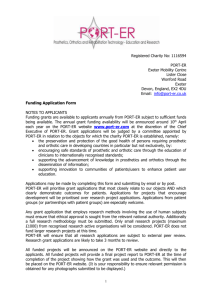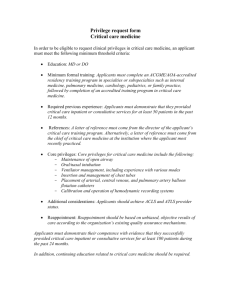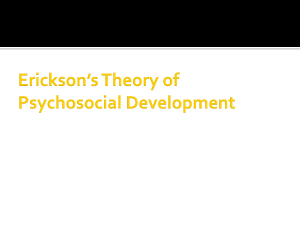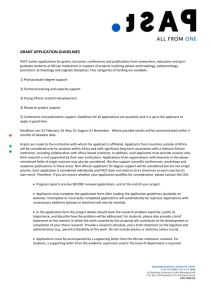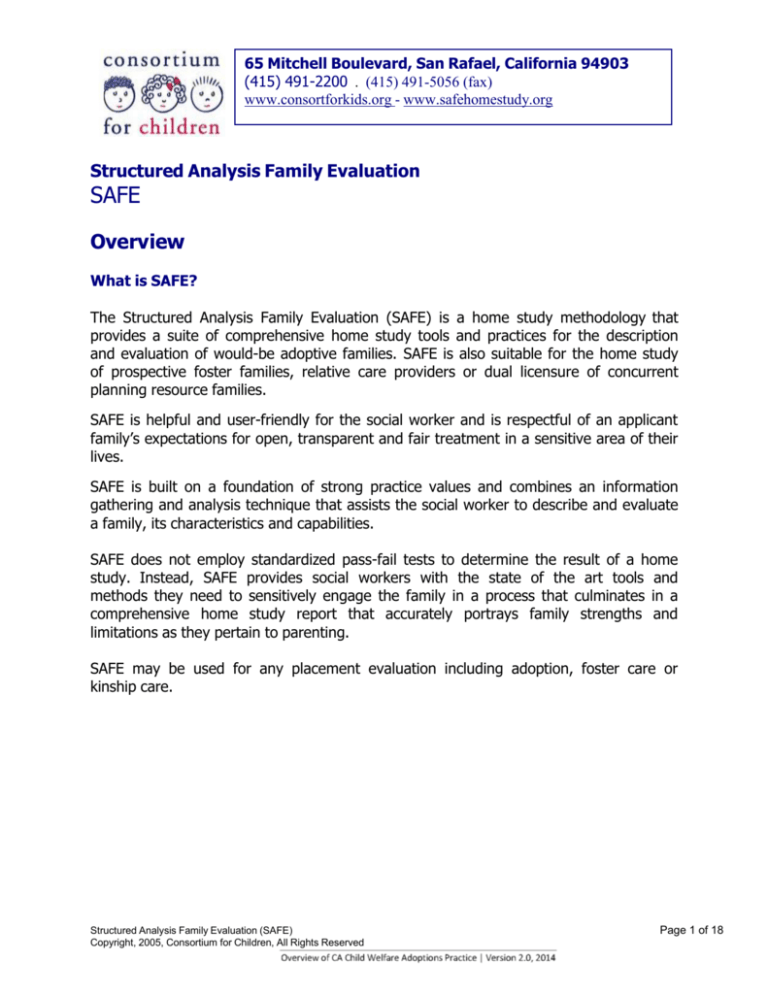
65 Mitchell Boulevard, San Rafael, California 94903
(415) 491-2200 . (415) 491-5056 (fax)
www.consortforkids.org - www.safehomestudy.org
Structured Analysis Family Evaluation
SAFE
Overview
What is SAFE?
The Structured Analysis Family Evaluation (SAFE) is a home study methodology that
provides a suite of comprehensive home study tools and practices for the description
and evaluation of would-be adoptive families. SAFE is also suitable for the home study
of prospective foster families, relative care providers or dual licensure of concurrent
planning resource families.
SAFE is helpful and user-friendly for the social worker and is respectful of an applicant
family’s expectations for open, transparent and fair treatment in a sensitive area of their
lives.
SAFE is built on a foundation of strong practice values and combines an information
gathering and analysis technique that assists the social worker to describe and evaluate
a family, its characteristics and capabilities.
SAFE does not employ standardized pass-fail tests to determine the result of a home
study. Instead, SAFE provides social workers with the state of the art tools and
methods they need to sensitively engage the family in a process that culminates in a
comprehensive home study report that accurately portrays family strengths and
limitations as they pertain to parenting.
SAFE may be used for any placement evaluation including adoption, foster care or
kinship care.
Structured Analysis Family Evaluation (SAFE)
Copyright, 2005, Consortium for Children, All Rights Reserved
Page 1 of 18
SAFE is currently being implemented or used in the following jurisdictions*:
United States:
Nevada
California
Los Angeles County
New Jersey
Colorado
Utah
Tennessee
Wisconsin
New Mexico
Rhode Island
Texas
Oklahoma
Canada
British Columbia
Nova Scotia
Ontario
* In almost all of the above jurisdictions SAFE is being used for Foster Care,
Adoption and Kinship Placements.
Structured Analysis Family Evaluation (SAFE)
Copyright, 2005, Consortium for Children, All Rights Reserved
Page 2 of 18
SAFE History
The technology behind SAFE has been under development, refinement and usage in California
since 1989. SAFE was developed due to concerns about the variability and superficiality of the
home study process. More specifically, SAFE was designed to address the following home study
concerns.
Lack of uniformity: Critical issues such as substance abuse, family violence, abusive
parenting practices and sexual abuse were not being consistently identified nor uniformly and
thoroughly explored.
No psychosocial evaluation: Home study methods did not provide for a psychosocial
evaluation. Home study reports were largely limited to verbatim reporting of information the
family provided. They routinely lacked a critical analysis of family functioning related to
parenting ability and readiness.
No effective information gathering or analysis tools: Information gathering tools, such
as the autobiography, were not providing comprehensive or relevant material. Thus, critical
information was not being gathered and evaluated uniformly.
Judgments based on worker bias: Judgments were often based on the social worker’s
personal biases rather than an objective analysis of factors relevant to parental suitability.
Irrelevant home study reports: The home study reports were incomplete and did not
contain information relevant to good placement decision-making.
The development of improved methods was guided initially by the pioneering work done by the
Children’s Bureau of Los Angeles in their Family Assessment Form (FAF). Based in part upon
these earlier efforts, in 2003 the Consortium for Children (CFC) of San Rafael, California created
today’s SAFE, a redesigned, refined, improved and tested “next generation” evaluation and
assessment methodology. It is a unique tool for improved social work practice.
Structured Analysis Family Evaluation (SAFE)
Copyright, 2005, Consortium for Children, All Rights Reserved
Page 3 of 18
SAFE is composed of six components:
./ SAFE Practice Values
./ SAFE Information Gathering Tools
./ SAFE Psychosocial Inventory
./ SAFE Desk Guide
./ SAFE Preformatted Home Study
./ SAFE Matching Inventory
Structured Analysis Family Evaluation (SAFE)
Copyright, 2005, Consortium for Children, All Rights Reserved
Page 4 of 18
SAFE Practice Values
The overall integrity and validity of SAFE AND the SAFE Home Study process is directly
related to the adherence to all of SAFE’s ten Practice Values:
1.
Because families are valuable resources for children, the SAFE home study process
strives to be inclusive, not exclusive.
2.
It is essential that SAFE home study practitioners build trust and rapport with the
families they serve by engaging them in an assessment process that promotes
mutual respect and understanding.
3.
A SAFE home study is most effective when an alliance is formed between the
home study practitioner and the family in which both share the best interest of a
child as their mutual concern.
4.
The psychosocial evaluation is a key component of a SAFE home study.
5.
SAFE incorporates a psychosocial evaluation cycle that recognizes family strengths
6.
SAFE is built on the belief that families and individuals have the capacity for
7.
The social work interview is the foundation of good social work practice and an
essential part of a SAFE home study.
8.
In order to effectively accomplish a SAFE home study, practitioners must be aware
of and understand how personal biases influence their perceptions and
determinations.
9.
SAFE home studies should never be accomplished without the benefit of
and identities and addresses issues of concern.
positive change.
supervision or consultation.
10. Applicants are advised at the beginning of a SAFE home study process that they
will have the opportunity to receive or to read a copy of their final written home
study report.
Structured Analysis Family Evaluation (SAFE)
Copyright, 2005, Consortium for Children, All Rights Reserved
Page 5 of 18
SAFE Information Gathering Tools
SAFE uses sophisticated, user friendly and yet seemingly simple questionnaires. The
questionnaires are designed to support, supplement and facilitate, not supplant, the
social work interview.
The SAFE information gathering tools are specifically targeted to:
Promote more truthful responses
Promote increased disclosure
Facilitate focused interviewing
Promote information gathering uniformity
Provide for optimal framing of questions
Memorialize answers
Save time for family and worker
SAFE Questionnaire I: Questionnaire I provide the social worker with a wealth of
information that formerly was gathered laboriously through the autobiography and
follow-up process. The questionnaire contains pointed, closed-ended questions and
provides a variety of possible answers for consideration. The use of this questionnaire
gives the family the opportunity for reflection and introspection, saves valuable worker
time and gives the worker more accurate information as a starting place and focus for
the interview.
SAFE Questionnaire II: Questionnaire II is designed to systematically and uniformly
cover key critical and personal areas of family functioning. Because this questionnaire
deals with very sensitive information, it is completed by the applicant(s) in the
presence of the home study worker. The use of Questionnaire II over the past 13
years has resulted in increased disclosure of vital, personal information. Because of
the effectiveness of this questionnaire, social workers must be prepared to handle very
emotionally charged issues that they may have consciously or subconsciously avoided
in the past.
SAFE Family Reference Form: The Family Reference Letter is to be sent to the
references named by the applicant(s). It is formatted similar to and asks some of the
same questions as Questionnaires I and II. The Reference Form provides a userfriendly manner for individuals providing a reference to provide an Agency with
important information about a family without drafting a lengthy and intimidating
narrative.
Structured Analysis Family Evaluation (SAFE)
Copyright, 2005, Consortium for Children, All Rights Reserved
Page 6 of 18
Example of Questionnaire I:
Instructions: Please answer the following questions as they apply to you. Most
of the questions have more than one answer, check all the choices
that apply.
PRINT NAME:
1.
DATE:
Who primarily raised you?
D Mother and Father
D Father
D Mother
D Mother and Stepparent
Caretaker(s)
D Father and Stepparent
2.
D Older Sibling(s)
D Adoptive Parent(s)
D Foster Parent(s)
D Institutional
D Aunt(s) and/or Uncle(s)
D Legal Guardian(s)
D Other:
Were you separated from either or both of your parents during your childhood for any of
the following reasons?
D No separations
home by
D Parents separated
services
D Parents divorced
D Death of parent(s)
3.
D Stepmother
D Stepfather
D Maternal Grandparent(s)
D Paternal Grandparent(s)
D Abandoned by parent(s)
D Parent(s) long-term hospitalization
D Parent(s) in military
D Parent(s) in prison
D Removed from your
police or social
D Other:
How old were you when you moved away from your parent(s)or primary caretaker(s)
home?
D
years old
D I currently live with my parent(s) or primary caretaker(s)
4.
What were the circumstances that led you to leave home?
5.
Among the children in your family, what is your position?
D Only child
D Number
6.
of
children
Check the boxes that best characterize your childhood relationship with your mother:
D No relationship
mother
D Abusive
D Idolized
D Neglectful
D Caring
D Supportive
D Fun
D Friendly
D Affectionate
D Took care of
D Warm
D Gentle
D Smothering
D Demonstrative
D Over protective
D Respectful
D Anxious
D Consistent
D Distant/Uninvolved
D Superficial
D Strained
D Close
D Afraid of mother
D Unpredictable
D Full of conflict
D Relaxed
D Loving
D Other:
Structured Analysis Family Evaluation (SAFE)
Copyright, 2005, Consortium for Children, All Rights Reserved
Page 7 of 18
Example: Questionnaire II
1. Have you or your spouse/partner ever experienced any of the following? (Check all that apply)
SELF
PARTNER
SPOUSE OR
N/A (No spouse/partner) ...........................................................................................................................
Incarceration..................................................................................................................... D
Military combat ................................................................................................................ D
Bankruptcy........................................................................................................................ D
Miscarriage........................................................................................................................ D
Infertility............................................................................................................................ D
Debilitating injury or illness ........................................................................................... D
Psychiatric hospitalization or outpatient treatment ................................................... D
Fired from a job ............................................................................................................... D
Death of a child or spouse/domestic partner............................................................. D
Had a child adopted ........................................................................................................ D
Had a child abducted or kidnapped.............................................................................. D
Put under a court restraining order............................................................................... D
Domestic Violence .......................................................................................................... D
None of the above........................................................................................................... D
2.
D
D
D
D
D
D
D
D
D
D
D
D
D
D
D
Have any of the issues listed below ever presented a problem for you or your
spouse/partner? (Check all that apply)
SELF
SPOUSE OR
PARTNER
N/A (No spouse/partner) ...........................................................................................................................
D
Gambling ..........................................................................................................................
Money management ........................................................................................................ D
Food................................................................................................................................... D
Sex ......................................................................................................................................
D
Controlling temper .......................................................................................................... D
Smoking ............................................................................................................................
D
Work ..................................................................................................................................
D
Education.......................................................................................................................... D
Pornography .....................................................................................................................
D
None of the above........................................................................................................... D
3.
Who in your family has used illegal drugs or abused legal drugs? (Check all that apply)
D Self
D Spouse or Partner
D Son(s)
member has
D Daughter(s)
4.
D
D
D
D
D
D
D
D
D
D
D
D Mother
D Father
D Stepmother
D Brother(s)
D Sister(s)
D Grandmother
D Aunt(s)
D Uncle(s)
D Nieces(s)
D Cousin(s)
D In law(s)
D No family
D Stepfather
D Grandfather
D Nephew(s)
D Other(s):
Who in your family has ever had a problem with alcohol abuse? (Check all that apply)
D Self
D Spouse or Partner
D Son(s)
member has
D Mother
D Father
D Stepmother
D Brother(s)
D Sister(s)
D Grandmother
D Aunt(s)
D Uncle(s)
D Nieces(s)
D Cousin(s)
D In law(s)
D No family
D Daughter(s)
D Stepfather
D Grandfather
D Nephew(s)
D Other(s):
Structured Analysis Family Evaluation (SAFE)
Copyright, 2005, Consortium for Children, All Rights Reserved
Page 8 of 18
SAFE Psychosocial Inventory
The Psychosocial Inventory works in conjunction with the SAFE Desk Guide to provide social
workers with a structured methodology of processing and analyzing the information they have
gathered in order to evaluate family functioning. The Psychosocial Inventory contains 68 (69
for other countries and International adoptions) psychosocial factors, which are grouped into
nine sections: The Psychosocial Inventory factors are rated on a five-point scale that measures
each factor on a positive to negative continuum.
The nine sections of the Psychosocial Inventory are as follows:
1.
History
2.
Personal Characteristics
3.
Marital/Domestic Partner Relationship
4.
Others living or frequently in the home
5.
Extended Family Relationships
6.
Physical/Social Environment
7.
General Parenting
8.
Specialized Parenting
9.
Adoption Issues (For adoption home studies only)
Example of History Section of the Psychosocial Inventory
A. HISTORY
A-1
Childhood Family Adaptability
A-2
Childhood Family Cohesion
A-3
Childhood History of Deprivation/Trauma
A-4
Childhood History of Victimization
A-5
Adult History of Victimization/Trauma
A-6
History of Child Abuse/Neglect
A-7
History of Alcohol/Drug Use
A-8
History of Crime/Allegations/Violence
A-9
Psychiatric History
A-10
Occupational History
A-11
Marriage/Domestic Partner History
Person # 1
1 2 3 4 5
1 2 3 4 5
1 2 3 4 5
1 2 3 4 5
1 2 3 4 5
1 2 3 4 5
1 2 3 4 5
1 2 3 4 5
1 2 3 4 5
1 2 3 4 5
1 2 3 4 5
OVERALL EVALUATION OF SECTION
1
Structured Analysis Family Evaluation (SAFE)
Copyright, 2005, Consortium for Children, All Rights Reserved
2
3
4
5
Person # 2
1 2 3 4 5
1 2 3 4 5
1 2 3 4 5
1 2 3 4 5
1 2 3 4 5
1 2 3 4 5
1 2 3 4 5
1 2 3 4 5
1 2 3 4 5
1 2 3 4 5
1 2 3 4 5
1
2
3
4
5
Page 9 of 18
SAFE Desk Guide
The Desk Guide defines each of the 68 psychosocial factors and provides examples that guide
evaluators to the most appropriate numerical rating for each factor on the Psychosocial
Inventory. Rating the factors in this manner enables the evaluator to accurately identify both
family strengths that need to be acknowledged and issues of concern that need to be
addressed.
Example of Desk Guide Rating for History of Alcohol/Drug Use (A-7)
A-7
History of Alcohol/Drug Use
Refers to historical use of alcohol, over the counter/prescription drugs and/or illegal drugs.
Rating
1
•
not applicable
has never drunk alcohol or has a history of occasional, moderate drinking (one or two drinks
2
•
•
•
•
•
history of regular, moderate use of alcohol (one or two drinks)
•
history of occasional unnecessary or un-prescribed use of over-the-counter and/or prescription
drugs, e.g. took pain pills that were prescribed for spouse
•
history of excessive drinking (three or more drinks), e.g. excessive drinking on weekends,
watching sports or going out with friends
•
history of regular use of milder illegal drugs, e.g. smoked or ingested marijuana over an extended
period of time
•
history of frequent unnecessary or un-prescribed use of over-the-counter and/or prescription drugs
•
•
history of alcohol dependence or addiction, e.g. severe and/or chronic alcoholism
•
history of regular (several times a week) abuse of over the counter and/or prescription drugs, e.g.
chronic addiction to over-the-counter and/or prescription drugs
3
4
5
has never used illegal drugs
has never abused prescription or over-the-counter drugs
history of brief experimentation with “milder” illegal drugs, e.g. smoked or ingested marijuana on
one or two occasions
history of “hard” illegal drug use and/or addiction to any illegal drugs, e.g. used drugs such as
heroin, cocaine or methamphetamines
Structured Analysis Family Evaluation (SAFE)
Copyright, 2005, Consortium for Children, All Rights Reserved
Page 10 of 18
Pre-Formatted Home Study Report
The SAFE preformatted home study report templates provide social workers with a
uniform model to accomplish their home study reports. There are basically two
preformatted reports: one for a child specific home study and one for a consolidated
home study (home study for either foster care licensure or adoption or both
simultaneously.) The templates for these home study reports are provided to the
various jurisdictions implementing SAFE on the SAFE web site. (www.safehomestudy.org)
The first half of the preformatted home study report contains identifying and descriptive
information about the family. The second half contains a psychosocial evaluation. This
evaluation is structured into the home study by integrating the Psychosocial Inventory
ratings into the report on a page entitled Psychosocial Inventory Results. This page
contains a listing of the 69 psychosocial factors from the Psychosocial Inventory and the
final rating for each factor. Each section also has an OVERALL EVALUATION OF
SECTION rating.
The Psychosocial Inventory results page gives the reader an overview of the
psychosocial factors considered, the final rating given to each factor and the overall
rating for each section. This overview gives the reader an instant means to learn about
the family’s strengths and limitations. If there are multiple problematic issues, this
overview is also helpful in identifying and giving meaning to clusters of factors.
The Psychosocial Inventory sections function as the outline for the Psychosocial
Inventory Evaluation narrative. The narration for each section establishes the integrity
or soundness of that particular section by staying focused on the specific factors
contained in the section. The narration for each section basically explains how the
social worker arrived at the OVERALL EVALUATION OF SECTION rating(s).
The Conclusions Section is used to make a prediction about the family’s readiness and
ability to parent based on the Psychosocial Inventory findings. Matching attempts to
establish the goodness of fit by identifying compatibility between parents’ strengths and
resources, and children’s vulnerabilities and needs. The Children Family Can Best Serve
section contains a determination of the range of child needs and characteristics the
social worker and applicants believe would fit into the family best.
Because it is recommended that a copy of the report be given to the family, a separate
page is provided for their signature acknowledging that they received a copy or have
read their home study.
Structured Analysis Family Evaluation (SAFE)
Copyright, 2005, Consortium for Children, All Rights Reserved
Page 11 of 18
Multi Purpose Home Study Report
This home study was completed by Name of Public/Private Agency solely for use in foster
care placement and/or adoption by and for United States licensed/authorized agencies
unless otherwise specified.
Name of Family:
Address:
City:
Home Phone:
Postal Code: 00000 - 0000
State:
Cell Phone:
APPLICATION DISPOSITION
Select One:
Select One:
The Applicants have applied to accept placement of a child between the ages of Select One to Select One
The Applicants Select One open to placement of a sibling group.
The Applicants are primarily interested in becoming Select One.
APPLICANT INFORMATION
Applicant's Full Name
Date of Birth:
Birthplace:
Gender:
Religion:
Occupation:
Language(s):
Education:
Height:
Weight:
Hair:
Eyes:
Date of health questionnaire/report:
TB test results:
Select One
Applicant's Full Name
Date of Birth:
Birthplace:
Gender:
Religion:
Occupation:
Language(s):
Education:
Height:
Weight:
Hair:
Eyes:
Date of health questionnaire/report:
TB test results:
Select One
MARITAL INFORMATION
Date of Marriage:
Place of Marriage:
DATES OF CONTACT
Date
Individual/Couple
Structured Analysis Family Evaluation (SAFE)
Copyright, 2005, Consortium for Children, All Rights Reserved
Marriage Verification: On File
Location
Page 12 of 18
MOTIVATION
Indicate both Applicants' stated reasons for wanting to become a foster parent, an adoptive parent, a foster adoptive
parent or resource family.
HOME ENVIRONMENT
Describe general characteristics of the Applicants' home and neighborhood. Indicate the type of residence (house,
apartment, condo, etc.) and square footage. Describe the floor plan including the number of bedrooms and
bathrooms.
Describe the yard space and indicate if there is a pool or spa. Describe the sleeping arrangements and also indicate
whether or not there are guns or pets in the home.
The interior and exterior of the home was inspected for health and safety hazards. The inspection was completed
on
.
FAMILY
Applicant #1: Applicant's Full Name
Describe how the applicant presents him/her self. Also indicate any special interests, hobbies, expertise or talents
the applicant possesses.
Identify parents, siblings, their location and circumstances plus type and frequency of contact.
Indicate name(s) and length of time of previous marriages and/or domestic partnerships. Include how relationships
were terminated, e.g., death, divorce, annulment, breakup. Identify any children born of these unions and describe
their current situation.
Applicant #2: Applicant's Full Name
Describe how the applicant presents him/her self. Also indicate any special interests, hobbies, expertise or talents
the applicant possesses.
Identify parents, siblings, their location and circumstances plus type and frequency of contact.
Indicate name(s) and length of time of previous marriages and/or domestic partnerships. Include how relationships
were terminated, e.g., death, divorce, annulment, breakup. Identify any children born of these unions and describe
their current situation.
Applicants’ Sons and Daughters
Indicate "None" or provide name(s), DOB and gender. Describe their personality, interests, school or occupational
situation, general health and living situation.
Other children living or frequently in the home
Indicate "None" or provide name(s), DOB, gender. Provide description of their personality, interests, school report
information if any, general health. Indicate nature of relationship to Applicants, and living situation.
Other adults residing or frequently in the home
Indicate name of any adult who is living in the home or who is in the home on a regular basis. Describe the amount
and type of contact they would have with a child.
Structured Analysis Family Evaluation (SAFE)
Copyright, 2005, Consortium for Children, All Rights Reserved
Page 13 of 18
Indicate each individual's occupation, general health, TB results (if they live in the home) and the nature of their
relationship to the Applicants.
Family Lifestyle
Describe current and proposed child care arrangements and work and non-work day routines and rituals.
What are the basic household rules and expectations? Who does what in terms of chores, cooking, bill paying,
home maintenance, transportation, etc.? Describe how the family deals with privacy and nudity in the home.
What kind of recreational, social and religious activities does the family engage in? Does the family celebrate
holidays; which ones and how are they spent?
Previous adoptions or foster care experience
Indicate "None" or discuss the circumstances and the adjustment of the child or children to the family.
FINANCES
Combined annual gross earned income: $
Sources of additional income: Explain, if any
CRIMINAL/CHILD ABUSE RECORD
The required criminal record and Child Abuse Index checks were completed for Applicant's Full Name and
Applicant's Full Name. Indicate the name(s) of any other individuals who were screened.
Department of Justice: Indicate the DOJ findings for each individual.
Child Abuse Index Check: Indicate the CAI findings for each individual.
Other findings: Indicate who was screened for any of the following and the findings for each person: FBI, DMV,
Juvenile Arrest Index and CPS service records as applicable.
EMERGENCY CARE PLAN
In case of an incapacitating illness or death of the Applicants, indicate whom the designated caretaker(s) will be and
the nature of their relationship to the Applicants.
Indicate if these arrangements have been discussed with the designated caretaker(s), how willing they are to assume
this responsibility and whether arrangements have been formalized in a will or trust.
CONTACT WITH FAMILY OF ORIGIN AND SIGNIFICANT OTHERS
Describe the type of relationship and contact the Applicants are willing to have with the birth parents and other
significant connections such as siblings, grandparents, foster parents, etc. Describe any written post-adoption
contact agreement(s).
REFERENCES
Indicate if all references have been received. Summarize information provided.
Structured Analysis Family Evaluation (SAFE)
Copyright, 2005, Consortium for Children, All Rights Reserved
Page 14 of 18
FAMILY PREPARATION AND TRAINING ACTIVITIES
Identify and describe agency family preparation activities. Include Applicants' statements regarding their
participation and benefits derived from these activities.
LEGAL/FINANCIAL RIGHTS AND RESPONSIBILITIES
Applicant's Full Name and Applicant's Full Name have been provided with information concerning the different
roles, responsibilities, legal and financial rights and benefits of relative/fictive kin caregivers, foster parents, legal
guardians and adoptive parents. Also, should they file a petition to adopt, Applicant's Full Name and Applicant's
Full Name understand that they will be accepting full legal and financial parental responsibility for Name(s) of
Child(ren) or /Youth(s) once an adoption is finalized.
The agency’s grievance review hearing procedures Select One explained to the Applicants.
Structured Analysis Family Evaluation (SAFE)
Copyright, 2005, Consortium for Children, All Rights Reserved
Page 15 of 18
PSYCHOSOCIAL INVENTORY RESULTS
NOTE: Below is a list of the psychosocial factors found on the SAFE Psychosocial Inventory. Using the Psychosocial Inventory, each factor was
considered and rated several times by the social worker during the course of this home study. The OVERALL EVALUATION OF SECTION ratings
reflect the degree to which all issues of concern identified in the section were either resolved, mitigated or the prognosis for change.
#1
2
2
2
2
2
2
2
2
2
2
2
2
#2
2
2
2
2
2
2
2
2
2
2
2
2
HISTORY
Childhood Family Adaptability
Childhood Family Cohesion
Childhood History of Deprivation/Trauma
Childhood History of Victimization
Adult History of Victimization/Trauma
History of Child Abuse/Neglect
History of Alcohol/Drug Use
History of Crime/Arrest/Allegations/Violence
Psychiatric History
Occupational History
Marriage/Domestic Partner History
OVERALL EVALUATION OF SECTION
#1
2
2
2
2
2
2
2
2
2
2
2
2
2
2
#2
2
2
2
2
2
2
2
2
2
2
2
2
2
2
PERSONAL CHARACTERISTICS
Communication
Commitment and Responsibility
Problem Solving
Interpersonal Relations
Health and Physical Stamina
Self-esteem
Acceptance of Differences
Coping Skills
Impulse Control
Mood
Anger Management and Resolution
Judgment
Adaptability
OVERALL EVALUATION OF SECTION
2
2
2
2
2
2
2
2
MARITAL/DOMESTIC PARTNER
RELATIONSHIP
Conflict Resolution
Emotional Support
Attitude toward Spouse/Partner
Communication between Couple
Balance of Power
Stability of the Marriage or Partnership
Sexual Compatibility
OVERALL EVALUATION OF SECTION
2
2
2
2
2
SONS/DAUGHTERS/OTHERS RESIDING
OR FREQUENTLY IN HOME
Minor Sons and Daughters
Minors Residing or Frequently in the Home
Adult Sons and Daughters
Adults Residing or Frequently in the Home
OVERALL EVALUATION OF SECTION
Structured Analysis Family Evaluation (SAFE)
Copyright, 2005, Consortium for Children, All Rights Reserved
#2
2
2
2
2
2
EXTENDED FAMILY RELATIONSHIPS
Extended Family Cohesion
Extended Family Adaptability
Relationship with own Extended Family
Relationship with Spouse’s/Partner’s Family
OVERALL EVALUATION OF SECTION
2
2
2
2
2
2
2
2
PHYSICAL/SOCIAL ENVIRONMENT
Cleanliness/Orderliness/Maintenance
Safety
Furnishings
Play Area/Equipment/Clothing
Finances
Support System
Household Pets
OVERALL EVALUATION OF SECTION
#1
2
2
2
2
2
2
2
2
2
2
2
#2
2
2
2
2
2
2
2
2
2
2
2
GENERAL PARENTING
Child Development
Parenting Style
Disciplinary Methods
Child Supervision
Learning Experiences
Parental Role
Child Interactions
Communication with Child
Basic Care
Child’s Play
OVERALL EVALUATION OF SECTION
#1
2
2
2
2
2
2
2
2
2
2
#2
2
2
2
2
2
2
2
2
2
2
SPECIALIZED PARENTING
Expectations
Effects of Abuse/Neglect
Effects of Sexual Abuse
Effects of Separation and Loss
Structure
Therapeutic/Educational Resources
Birth Sibling Relationships
Child Background Information
Birth Parent Issues
OVERALL EVALUATION OF SECTION
#1
2
2
2
2
2
#2
2
2
2
2
2
ADOPTION ISSUES
Infertility
Telling Child about Adoption
Openness in Adoption
Adoptive Parent Status
OVERALL EVALUATION OF SECTION
#1
2
2
2
2
2
Page 16 of 18
PSYCHOSOCIAL EVALUATION REPORT
HISTORY
Describe the basis for ratings of 1 (exceptional strengths). Briefly summarize ratings of 2 (strengths). Fully narrate
ratings of 3, 4 & 5 (concerns) to include how the concern was addressed, severity, mitigating factors and degree of
resolution.
PERSONAL CHARACTERISTICS
Describe the basis for ratings of 1 (exceptional strengths). Briefly summarize ratings of 2 (strengths). Fully narrate
ratings of 3, 4 & 5 (concerns) to include how the concern was addressed, severity, mitigating factors and the
prognosis for change.
MARITAL/DOMESTIC PARTNER RELATIONSHIP
Describe the basis for ratings of 1 (exceptional strengths). Briefly summarize ratings of 2 (strengths). Fully narrate
ratings of 3, 4 & 5 (concerns) to include how the concern was addressed, severity, mitigating factors and the
prognosis for change.
SONS/DAUGHTERS/OTHERS RESIDING OR FREQUENTLY IN THE HOME
For each person identified in this section, provide full narration that relates to each of the Desk Guide examples for
the rating given.
EXTENDED FAMILY RELATIONSHIPS
Describe the basis for ratings of 1 (exceptional strengths). Briefly summarize ratings of 2 (strengths). Fully narrate
ratings of 3, 4 & 5 (concerns) to include how the concern was addressed, severity, mitigating factors and the
prognosis for change.
PHYSICAL/SOCIAL ENVIRONMENT
Describe the basis for ratings of 1 (exceptional strengths). Briefly summarize ratings of 2 (strengths). Fully narrate
ratings of 3, 4 & 5 (concerns) to include how the concern was addressed, severity, mitigating factors and the
prognosis for change.
GENERAL PARENTING
Describe the basis for ratings of 1 (exceptional strengths). Briefly summarize ratings of 2 (strengths). Fully narrate
ratings of 3, 4 & 5 (concerns) to include how the concern was addressed, severity, mitigating factors and the
prognosis for change.
SPECIALIZED PARENTING
Describe the basis for ratings of 1 (exceptional strengths). Briefly summarize ratings of 2 (strengths). Fully narrate
ratings of 3, 4 & 5 (concerns) to include how the concern was addressed, severity, mitigating factors and the
prognosis for change.
ADOPTION ISSUES
Describe the basis for ratings of 1 (exceptional strengths). Briefly summarize ratings of 2 (strengths). Fully narrate
ratings of 3, 4 & 5 (concerns) to include how the concern was addressed, severity, mitigating factors and the
prognosis for change.
Structured Analysis Family Evaluation (SAFE)
Copyright, 2005, Consortium for Children, All Rights Reserved
Page 17 of 18
PSYCHOSOCIAL EVALUATION CONCLUSIONS
Provide your conclusions regarding the Applicants' committment, ability and readiness to parent. Highlight the
strengths in any section given a rating of 1 and describe the effect any section rated as 3, 4 or 5 will have on
parenting.
CHILDREN THE FAMILY CAN BEST SERVE
Indicate the age range, gender and number of children the Applicants are ready to accept.
Discuss the Applicants' ability to meet a child's special needs or considerations and level of competency to manage
the characteristics, behaviors, conditions and issues of the children being considered for placement with them.
Specify any child's special needs, considerations, characteristics, behaviors, conditions or issues that the Applicants
are uniquely qualified to address. Also indicate what they are unable and/or unwilling to consider.
RECOMMENDATION
It is recommended that Applicant's Full Name and Applicant's Full Name be Select One for Select One.
Caseworker
Title
Date:
Supervisor
Title
Date
Additional Attachments
Indicate "None" or list additional attachments.
RECEIPT OF COPY OF HOME STUDY REPORT
By signing below I acknowledge receiving a copy of this report.
Applicant's Full Name
Date:
Applicant's Full Name
Date
To check for form updates, press the ctrl key and click this link.
Structured Analysis Family Evaluation (SAFE)
Copyright, 2005, Consortium for Children, All Rights Reserved
Page 18 of 18


